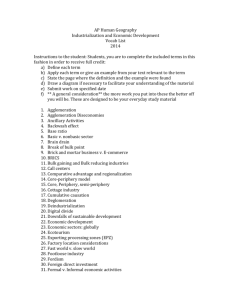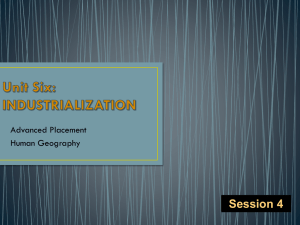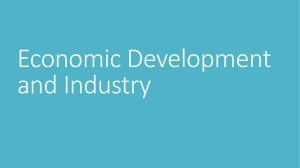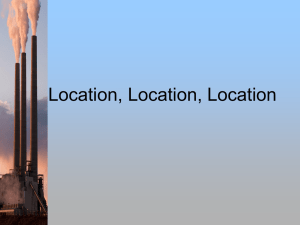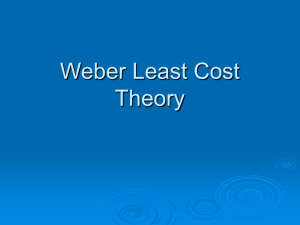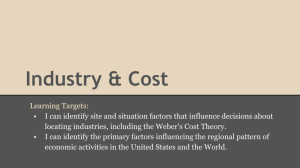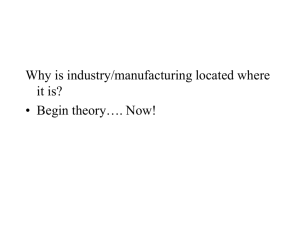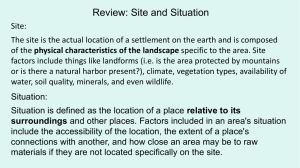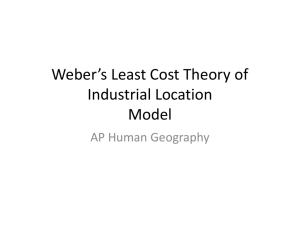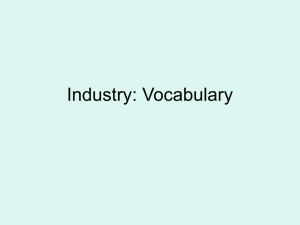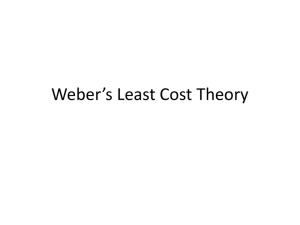AP HUG Study Guide – Economic Geography Know the terms from
advertisement
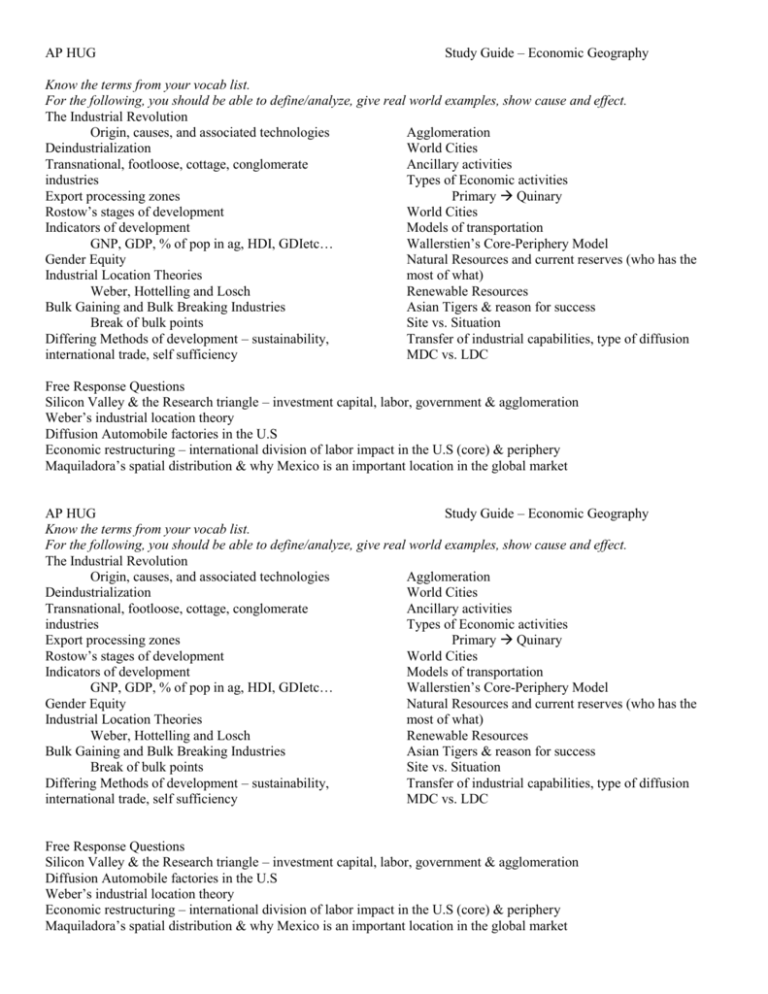
AP HUG Study Guide – Economic Geography Know the terms from your vocab list. For the following, you should be able to define/analyze, give real world examples, show cause and effect. The Industrial Revolution Origin, causes, and associated technologies Agglomeration Deindustrialization World Cities Transnational, footloose, cottage, conglomerate Ancillary activities industries Types of Economic activities Export processing zones Primary Quinary Rostow’s stages of development World Cities Indicators of development Models of transportation GNP, GDP, % of pop in ag, HDI, GDIetc… Wallerstien’s Core-Periphery Model Gender Equity Natural Resources and current reserves (who has the Industrial Location Theories most of what) Weber, Hottelling and Losch Renewable Resources Bulk Gaining and Bulk Breaking Industries Asian Tigers & reason for success Break of bulk points Site vs. Situation Differing Methods of development – sustainability, Transfer of industrial capabilities, type of diffusion international trade, self sufficiency MDC vs. LDC Free Response Questions Silicon Valley & the Research triangle – investment capital, labor, government & agglomeration Weber’s industrial location theory Diffusion Automobile factories in the U.S Economic restructuring – international division of labor impact in the U.S (core) & periphery Maquiladora’s spatial distribution & why Mexico is an important location in the global market AP HUG Study Guide – Economic Geography Know the terms from your vocab list. For the following, you should be able to define/analyze, give real world examples, show cause and effect. The Industrial Revolution Origin, causes, and associated technologies Agglomeration Deindustrialization World Cities Transnational, footloose, cottage, conglomerate Ancillary activities industries Types of Economic activities Export processing zones Primary Quinary Rostow’s stages of development World Cities Indicators of development Models of transportation GNP, GDP, % of pop in ag, HDI, GDIetc… Wallerstien’s Core-Periphery Model Gender Equity Natural Resources and current reserves (who has the Industrial Location Theories most of what) Weber, Hottelling and Losch Renewable Resources Bulk Gaining and Bulk Breaking Industries Asian Tigers & reason for success Break of bulk points Site vs. Situation Differing Methods of development – sustainability, Transfer of industrial capabilities, type of diffusion international trade, self sufficiency MDC vs. LDC Free Response Questions Silicon Valley & the Research triangle – investment capital, labor, government & agglomeration Diffusion Automobile factories in the U.S Weber’s industrial location theory Economic restructuring – international division of labor impact in the U.S (core) & periphery Maquiladora’s spatial distribution & why Mexico is an important location in the global market
